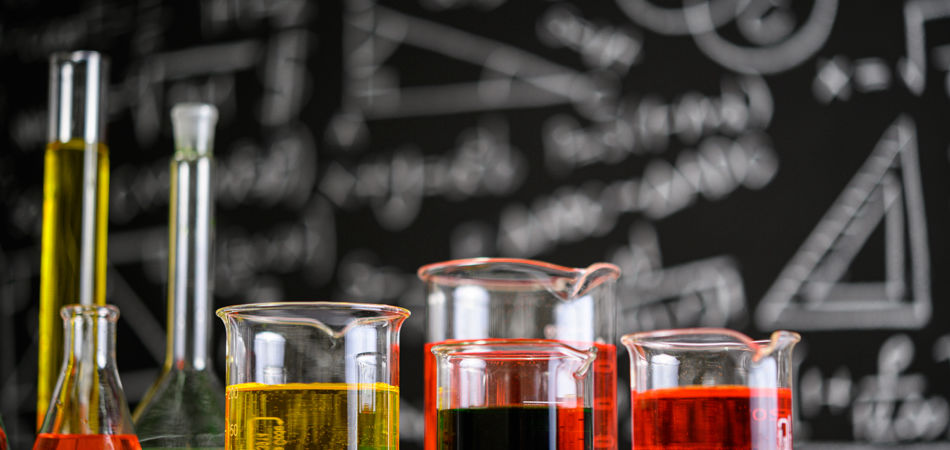


Chemistry related important General Knowledge questions | Chemistry important questions and answers Chemistry related important General Knowledge questions,Chemistry important questions and answers, Chemistry questions and answers for IAS, RAS, CDS and SSC CGL
Chemistry, often referred to as the "central science," is the study of matter, its properties, composition, and the changes it undergoes. From the tiniest atoms to the most complex chemical reactions, chemistry is the key to understanding the world around us. Whether you're a science enthusiast, a student, or simply curious about the wonders of the natural world, this blog is your gateway to exploring the fascinating realm of chemistry through a series of intriguing general knowledge questions.
Here, I am sharing Chemistry General Knowledge Questions and Answers related to General Science under General Knowledge section for upcoming and government exams.
Also, Read Latest Current Affairs Questions 2023: Current Affairs Today
"Put your knowledge to the test and excel with our General Knowledge Mock Test and Current Affairs Mock Test!"
Q :
In the presence of sunlight, plants prepare their food (glucose) with CO2 and water. What is this reaction?
(A) Displacement
(B) Disintegration
(C) Photochemical
(D) precipitation
Photochemical is the process by which plants use sunlight, water, and carbon dioxide to create oxygen and energy in the form of sugar.
The atomic number of an atom of an element is 17 and the mass number is 36. The number of neutrons in its nucleus is
(A) 17
(B) 19
(C) 36
(D) 53
An atom of an element has atomic number 17 and mass number 36. The number of neutrons in its nucleus is 19.
Thin wires can be drawn from a piece of metal. Which property of the metal is it responsible for?
(A) ductility
(B) hardness
(C) malleability
(D) conductivity
The property of metal by which it can be drawn into wires is called ductility.
The difference between the isotopes of an element is due to the presence of different numbers of
(A) Proton
(B) Newton
(C) Electron
(D) Photon
Isotopes are atoms of the same element that have different numbers of neutrons but the same number of protons and electrons. The difference in the number of neutrons between the various isotopes of an element means that the various isotopes have different masses.
What is the mass of one mole of a substance in grams called?
(A) Nuclear mass
(B) Atomic mass
(C) Molar mass
(D) Molecular mass
"X" is a chemical present in our stomach and is necessary for digestion of food. When 'X' is secreted in excess, it causes health problems like indigestion. 'Y' is a chemical used to treat this condition. What could be 'X' and
(A) X is hydrochloric acid & Y is sodium carbonate.
(B) X is the milk of magnesia & Y is hydrochloric acid.
(C) X is hydrochloric acid & Y ismilk of magnesia.
(D) X is milk of magnesia & Y is ascorbic acid.
Hydrochloric Acid:
It creates the acidic conditions necessary for the action of the enzyme pepsin.
The function of hydrochloric acid is to kill bacteria and pathogens. When hydrochloric acid is secreted in excess, it causes health problems like indigestion.
Excessive secretion of stomach acid can also lead to the formation of peptic ulcers.
If a person is shot with a gun and all the bullets are not removed from his body, then due to which of the following poison will spread in his body?
(A) Mercury
(B) Lead
(C) Iron
(D) Arsenic
If a person is injured by shot of gun and all the bullets could not be removed it may cause poisoning by Lead As.
Which of the following will not be helpful in the process of separating a mixture of salt and water?
(A) Decantation
(B) Filteration
(C) Distillation
(D) Boiling
Distillation, Boiling and Filteration (reverse osmosis) are helpful to separate the mixture of salt and water. Decantation only separates insoluble solids that settle on the bottom; thus, it cannot be used to separate a mixture of salt and water.
The electron configuration of the atom with the atomic number '20' is?
(A) 2, 8, 10
(B) 2, 6, 8, 4
(C) 2, 8, 8, 2
(D) 2, 10, 8
The electronic configuration of the element with atomic number 20 is 2, 8, 8, 2.
The element with an atomic number of 20 is Calcium, Ca.
The electron configuration is found using the Aufbau principle: 1s2, 2s2, 2p6, 3s2, 3p6, 4s2
It belongs to the 2nd group and 4th period.
The atomic number of an atom of an element is 17 and the mass is 36. What is the number of neutrons in its nucleus?
(A) 17
(B) 19
(C) 36
(D) 53
An atom of an element has atomic number 17 and mass number 36. The number of neutrons in its nucleus is 19.
Get the Examsbook Prep App Today